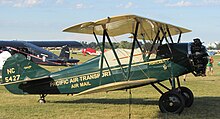
Western Airlines was a major airline in the United States based in California, operating in the Western United States including Alaska and Hawaii, and western Canada, as well as to New York City, Boston, Washington, D.C., and Miami and to Mexico City, London and Nassau. Western had hubs at Los Angeles International Airport, Salt Lake City International Airport, and the former Stapleton International Airport in Denver. Before it merged with Delta Air Lines in 1987 it was headquartered at Los Angeles International Airport (LAX). Throughout the company's history, its slogan was "Western Airlines...The Only Way to Fly!"

Airmail is a mail transport service branded and sold on the basis of at least one leg of its journey being by air. Airmail items typically arrive more quickly than surface mail, and usually cost more to send. Airmail may be the only option for sending mail to some destinations, such as overseas, if the mail cannot wait the time it would take to arrive by ship, sometimes weeks. The Universal Postal Union adopted comprehensive rules for airmail at its 1929 Postal Union Congress in London. Since the official language of the Universal Postal Union is French, airmail items worldwide are often marked Par avion, literally: "by airplane".

Varney Air Lines was an American airline company that started service on April 6, 1926, as an airmail carrier. Formed by Walter Varney, the airline was based in Boise, Idaho, United States. The airline is one of the predecessors of United Airlines.
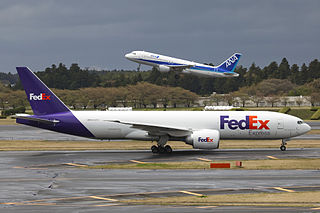
Air cargo is any property carried or to be carried in an aircraft. Air cargo comprises air freight, air express and airmail.
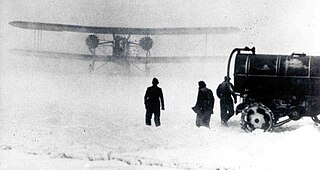
The Air Mail scandal, also known as the Air Mail fiasco, is the name that the American press gave to the political scandal resulting from a 1934 congressional investigation into the awarding of contracts to certain airlines to carry airmail and the subsequent disastrous use of the U.S. Army Air Corps (USAAC) to fly the mail after the contracts were revoked.

The Boeing Model 40 is a United States mail plane of the 1920s. It was a single-engined biplane that was widely used for airmail services in the United States in the 1920s and 1930s, especially by airlines that later became part of United Airlines. It became the first aircraft built by the Boeing company to carry passengers.
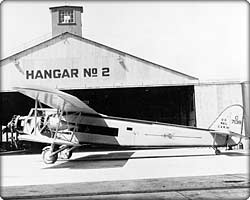
The Boeing 80 is an American airliner of the 1920s. A three-engined biplane, the Model 80 was built by the Boeing Airplane Company for Boeing's own airline, Boeing Air Transport, successfully carrying both airmail and passengers on scheduled services.
National Air Transport was a large United States airline; in 1930 it was bought by Boeing. The Air Mail Act of 1934 prohibited airlines and manufacturers from being under the same corporate umbrella, so Boeing split into three smaller companies, one of which is United Airlines, which included what had been National Air Transport.
Leon Dewey "Lee" Cuddeback flew the first scheduled, civilian Air Mail flight in the United States on April 6, 1926. He did so as chief pilot of Varney Air Lines. His route began in Pasco, Washington, had a stop in Boise, Idaho, and terminated in Elko, Nevada. Because the start of the contract air mail system is considered the beginning of airline service, Cuddeback's flight is cited as the first U.S. airline flight, and is also celebrated as the "birthday" of United Airlines.

United States airmail was a service class of the United States Post Office Department (USPOD) and its successor United States Postal Service (USPS) delivering air mail by aircraft flown within the United States and its possessions and territories. Letters and parcels intended for air mail service were marked as "Via Air Mail", appropriately franked, and assigned to any then existing class or sub-class of the Air Mail service.

The Hamilton H-45 and H-47 were six-passenger-seat, all-metal, high-wing monoplanes powered by single Pratt & Whitney radial engines. They were built for passenger and mail-carrying work in the US in the late 1920s.
The Kawanishi K-7 Transport Seaplane was a Japanese single-engined biplane floatplane of the 1920s. Eleven were built from 1924 to 1927, being used to carry passengers and airmail.

Stout Metal Airplane Division of the Ford Motor Company was an American aircraft manufacturer founded by William Bushnell Stout as the Stout Metal Airplane Co. in 1922. The company was purchased by Ford Motor Company in 1924 and later produced the Ford Trimotor. At the height of the Great Depression, Ford closed the aircraft design and production division in 1936, temporarily re-entering the aviation market with the production of the B-24, at the Willow Run aircraft factory during World War II.
Ford Air Transport Service is a defunct airline based in United States of America. The airline was also registered as Ford Air Freight Lines.

The China Clipper flight departure site is listed as California Historical Landmark number 968. It is the site from which Pan American World Airways initiated trans-Pacific airmail service on November 22, 1935. A flying boat named China Clipper made the first trip, and the publicity for that flight caused all flying boats on that air route to become popularly known as China Clippers. For a few years, this pioneering mail service captured the public imagination like the earlier Pony Express, and offered fast luxury travel like the later Concorde.

Florida Airways was an American airline. Founded in part by Eddie Rickenbacker and based in the state of Florida, the airline served the southeastern United States during the mid-1920s.
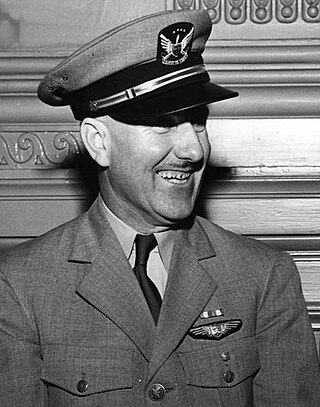
Grover Clinton Tyler was an aeronautical pioneer who flew as an airmail pilot in the 1920s and 1930s, and one of only ten recipients of the Airmail Flyers' Medal of Honor.
Clifford Ball was an American farmer, soldier, bookkeeper, clerk, automobile dealer, airplane dealer, airline owner, airline operator, airline executive, radio manufacturer, Civil Air Patrol officer and chaplain, and aviation pioneer.
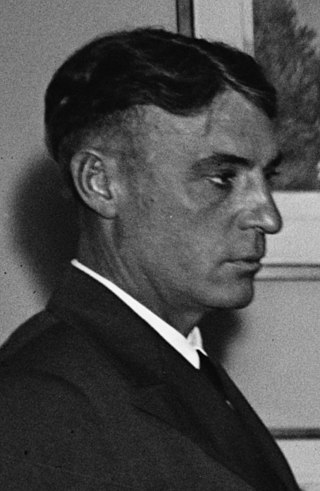
Roy Herbert Warner was an American farmer, navy sailor, army soldier, army pilot, airmail pilot, Royal Air Force pilot, and one of ten recipients of the Airmail Flyers' Medal of Honor.
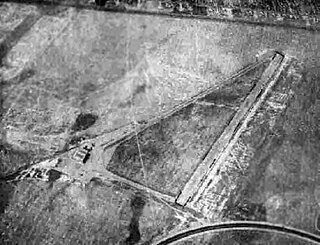
Vail Airport, Montebello was an airport in Montebello, California from 1926 to 1953. The airport was owned and operated by Western Air Express. Western Air Express purchased 700 acres of Vail farm to build the private airport from the Vail brothers. The vast airport was boarded by Telegraph Road on the south, Ferguson Drive on the north, Tusbway Avenue on the west, and Yates Avenue to the east. A group of Los Angeles entrepreneurs founded Western Air Express and the airport to cash in on the Air Mail Act of 1925 that opened up bidding on air mail contracts. Western Air Express purchased six Douglas mailplanes model M-2 to start the company. Western Air Express built two 2 unpaved runways running north–south in the middle of the lot, along the current Yates Avenue. A nearby movie studio building was turned into the main hangar and three more were built. Western Air Express won an airmail contract run from Las Vegas to Salt Lake City in 1926. In 1927 the local airport became famous as Charles Lindbergh landed The Spirit of St. Louis at the airport on a nationwide. Leland A. Bryant designed and built his racing aircraft at Vail Airport starting in 1927. Ryan Mechanics built the Lone Eagle CM-1 at Vail Airport in 1928.

